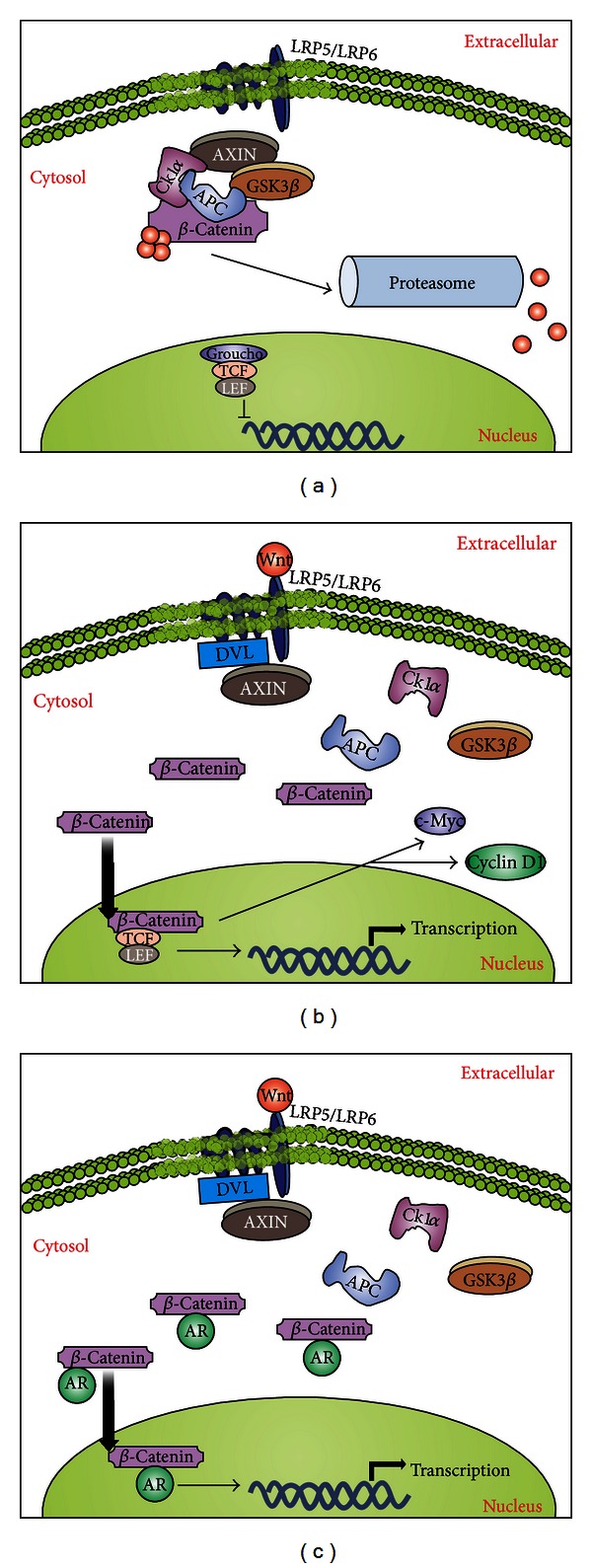Figure 7.

The Wnt signaling and its implications in the development of prostate cancer. (a) In an inactive state, the protein β-catenin is sequestered in a complex in the presence of Axin, GSK3β, CK1α, and APC. This complex allows ubiquitination of β-catenin and its subsequent degradation in a proteasome-dependent manner, maintaining this pathway inactive in the absence of Wnt. (b) After binding of Wnt to Frizzled receptor complex (which includes the adaptor molecules LRP5/LRP6), this allows the recruitment of Dishevelled (DVL) and Axin; the recruitment of Axin disrupts the inactivation complex and releases β-catenin, which translocates to the nucleus and functions as a transcription factor, inducing expression of several genes related to proliferation, such as c-myc and cyclin D1. (c) In the PCa environment, β-catenin can combine with AR proteins, whose levels are typically increased in PCa, enhancing their function as transcription factors and leading to increased gene expression of pro-survival and proliferative factors.
